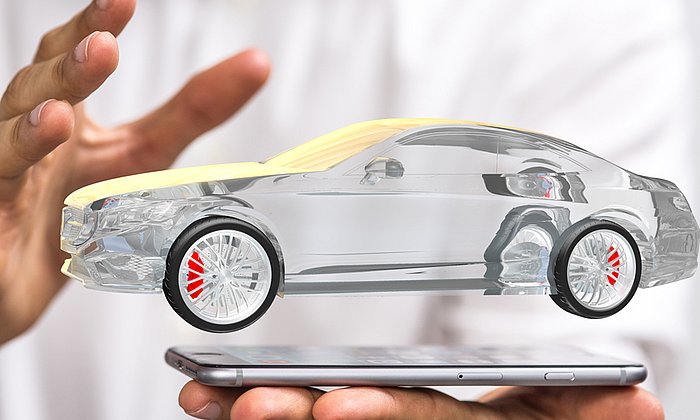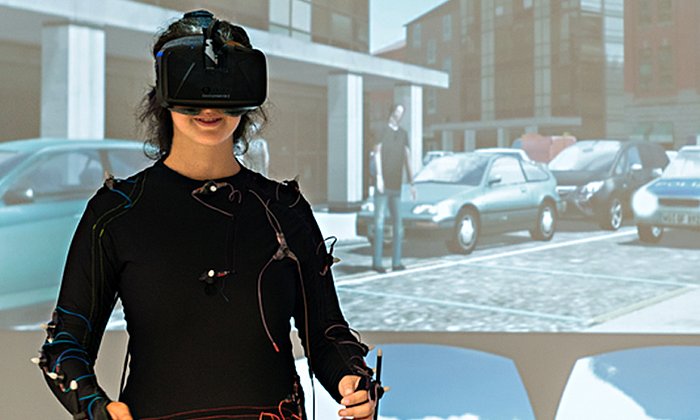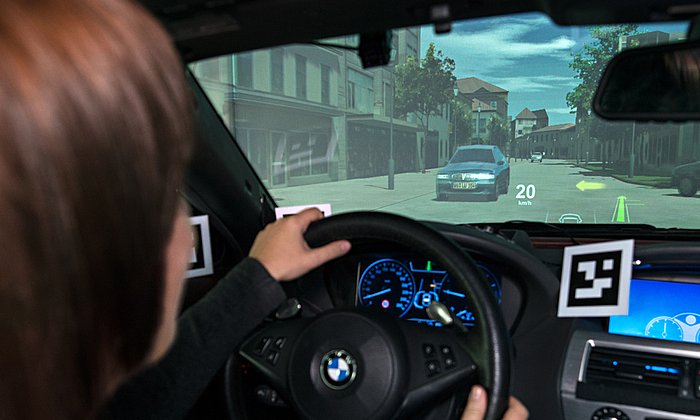Science Year 2018: Prof. Klaus Bengler speaks on the working worlds of the future
"The greatest threat to our jobs is not the robot"

Will we be working more and more often with robots in the future?
An increase in the number of robots of the widest possible variety can indeed be seen today. Machines are becoming more and more intelligent and act more independently; we should change our ideas about robots. The difference between today's robots and the automation of the past is that current machines don't simply replace humans. Much more they coexist, cooperate and collaborate with humans. An example of coexistence would be relaxing in the yard while an automated mowing robot mows the lawn. Cooperation here means you work together with another robot, under some circumstances in the same physical vicinity. This is becoming more and more common in factories and for safety reasons has to be planned very meticulously. And when people and robots collaborate, they work together hand in hand in the figurative sense. For example, when you have to carry something heavy and the robot assists you. In my prognosis we'll increasingly find ourselves in a working world which is developing its own dynamics, and we'll only be able to influence these dynamics to a certain extent. Up to now it's been the case that devices only take action when we switch them on. These independent dynamics present one of the most important design tasks.
Many people are worried about losing their jobs because robots will replace them in the workplace. Is this concern justified?
A lot of different scenarios are currently being discussed. I think what will happen is that there will not be a reduction in the number of jobs, but rather changes will take place in terms of the nature of the jobs themselves. Certain jobs will be eliminated, but new jobs will also be created, for example in the development, maintenance and programming of machines. In particular, significantly more users will be capable of programming in the future than is the case today. And many people will also be able to remain at work because they receive individual support from robots. Here in my opinion the potential of intelligently cooperating machines, which as before are used by humans and make their work easier, is clearly underestimated. This means the machine will take over a standard activity, but the human who has the expertise is responsible for the assignment and carries it out. For example I may be able to us a lifting assistant or an exoskeleton to lift loads that would otherwise be too heavy for me.
But won't this transformation in the job profile be difficult for employees to handle?
In my opinion, the greatest danger is actually not that a robot will take someone's job away. The greater risk is that employees will not be able to correctly operate the robot because they don't have the necessary qualifications or the device's design is much too complex. What do we mean by ease of use when it comes to robotic systems in the broadest sense? And thus we're all faced by the question of how we can learn to handle the next generation of IT. We shouldn't view these technologies as a threat, but rather as offering potential for design. The basic interest is fundamentally present in most people. But the substance also has to be prepared appropriately. This is a task for us as a university: New forms of teaching and learning have to be developed. Here we should make sure to consider the potential of virtual and augmented reality in learning and education.
What is the task of research in general and ergonomics in particular in the transformation of the working world?
We should always develop and design technologies in such a way that they are oriented to human beings. In research we're concerned with how technical systems have to be designed so that they can be used not only by their developers or engineers, but also by subsequent users. As ergonomists we can define clear recommendations for action. For example a machine interface can be designed so that it is based on the familiar principles of everyday life, such as operating a smartphone. This alone eliminates an obstacle in learning. But we also point out where this doesn't make sense, for example in the case of security-relevant systems in which user errors could have serious consequences.
Another challenge: The design of salient patterns of movement. In the future more and more machines will move around us, for example cars, delivery robots and household robots. The question here is how their motion sequences have to be deployed so that they don't disturb and confuse humans, but rather are smoothly embedded in our habits.
Contact:
Prof. Klaus Bengler
Technical University of Munich
Institute of Ergonomics
Tel.: +49 89 289 15400
E-mail: bengler@tum.de
http://www.lfe.mw.tum.de/en/
More information
Technical University of Munich
Corporate Communications Center
- Stefanie Reiffert
- stefanie.reiffert@tum.de
- presse@tum.de
- Teamwebsite


